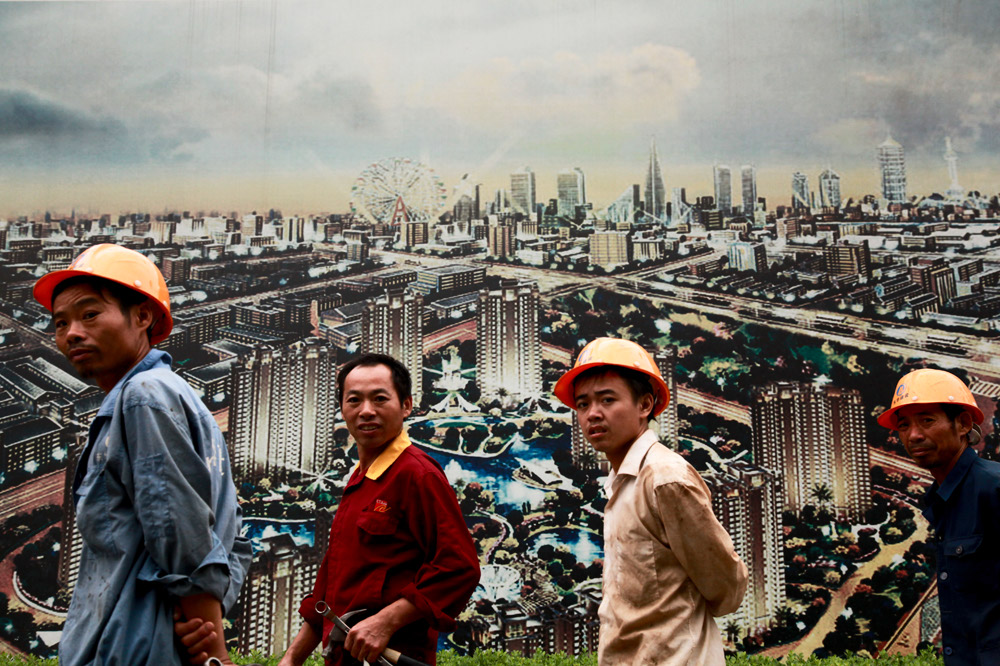Memo #346
By: Meiqin Wang – meiqin.wang [at] csun.edu and Minna Valjakka – minna.valjakka [at] helsinki.fi
Interconnectedness between visual arts and urbanization defines the recent development of Chinese visual arts

 China’s massive urbanization in the past two decades has had a far-reaching impact on the practices of visual arts. These repercussions are evident in agencies, subject matters, themes, styles of specific works, art policies, spaces of production and dissemination, evaluation, art consumption, and other areas. In particular, the transformations of the urban space and the various phenomena and problems associated with urbanization, such as construction boom, high mobility, technological innovation as well as dislocation, social discrepancy and environmental deterioration, have been repeatedly addressed in visual arts since the 1990s. The engagement of various stakeholders through visual arts have in turn also sparked new interpretations of and visions for the city.
China’s massive urbanization in the past two decades has had a far-reaching impact on the practices of visual arts. These repercussions are evident in agencies, subject matters, themes, styles of specific works, art policies, spaces of production and dissemination, evaluation, art consumption, and other areas. In particular, the transformations of the urban space and the various phenomena and problems associated with urbanization, such as construction boom, high mobility, technological innovation as well as dislocation, social discrepancy and environmental deterioration, have been repeatedly addressed in visual arts since the 1990s. The engagement of various stakeholders through visual arts have in turn also sparked new interpretations of and visions for the city.
Artists have engaged in examining and envisioning new ways to understand the city in a great variety of formats, such as photographs, installations, paintings, performances, multimedia art, documentaries, films and urban art images (e.g. contemporary graffiti and street art). For example, Shanghai artist Ni Weihua captures the penetration of consumerism through street billboards and contemplates the rising social inequality along with the country’s spectacular GDP-growth in his documentary photography Landscape Wall; French street artist Julien Malland reveals the scars left to both Chinese urban fabric and urbanites with his site-responsive works depicting ephemeral human figures.
Besides contemporary artists and filmmakers, average Chinese urbanites, local and international corporations, non-profit organizations (NPOs), and government agencies are using visual arts for various purposes. For example, growing pressure to urbanize and develop has strengthened the need for city officials to employ visual arts for the improvement of living conditions and the construction of city image through public art projects. Municipal officials in Beijing, Shanghai, and Guangzhou, among others, have also adopted new forms from electronic screens to contemporary graffiti to disseminate official messages endorsing China’s top-down and market-driven urban development.
Rapidly changing socio-spatial practices regarding the usage of urban public space are modifying visual art in China. At the same time, new visual forms developed by artists and urbanites are not only mirroring the transformations of Chinese cities but are actively reshaping the cityscapes through their critical engagement with the urban space.
About the Authors:
Meiqin Wang is an Associate Professor of Art History at California State University Northridge and she recently published Urbanization and Contemporary Chinese Art (Routledge 2015).
Minna Valjakka is an Affiliated Fellow in the International Institute for Asian Studies and a Researcher in Art History at the University of Helsinki, specializing in urban creativity in East Asia.

One of Julien (a.k.a. Seth) Malland’s latest works in Shanghai. Created in August 2015 (Credit: Minna Valjakka, September 2015).
Links
- Meiqin Wang and Minna Valjakka (eds), “Special issue on Visual Arts and Urbanization,” China Information, Vol. 29, No. 2 (July 2015).
- Minna Valjakka, “Urban Art Images and the Concerns of Mainlandization in Hong Kong,” in Asian Cities: Colonial to Global, edited by Gregory Bracken (Amsterdam: Amsterdam University Press, 2015), 95–122.
- Jiang Jiehong, An Era Without Memories: Chinese Contemporary Photography on Urban Transformation, (London: Thames & Hudson, 2015).
- Robin Visser, Cities Surround The Countryside: Urban Aesthetics in Postsocialist China, (Durham: Duke University Press, 2010).
- Yomi Braester, Painting the City Red: Chinese Cinema and the Urban Contract, Durham: Duke University Press, 2010.
- Lin Qi, “Urbanization Boosts Need for Public Art,” China Daily, September 21, 2013.
- Robert Klanten and Matthias Hũbner (eds), Urban Interventions: Personal Projects in Public Spaces, (Berlin: Gestalten, 2010).
Related Memos:
See our other memos on China.
